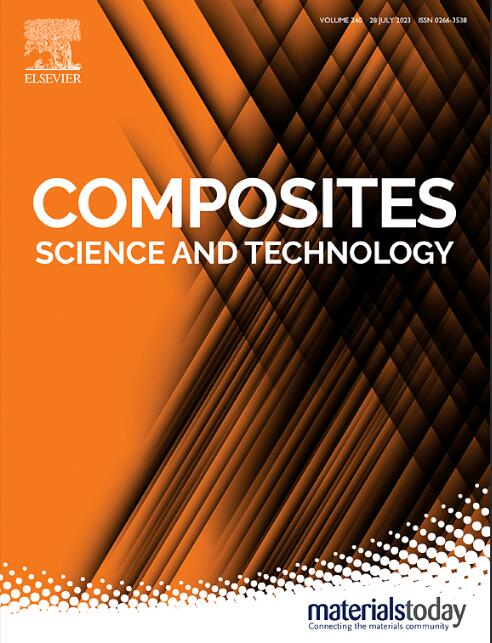加工对CFRP粘接强度的影响及纳米颗粒树脂预涂增强
IF 8.3
1区 材料科学
Q1 MATERIALS SCIENCE, COMPOSITES
引用次数: 0
摘要
碳纤维增强聚合物(CFRP)由于其高强重比等优异的性能在工业上得到了广泛的应用。然而,当与钛合金等金属结合时,加工后的CFRP通常表现出较低的结合强度。通过单搭接剪切(SLS)试验,研究了加工对CFRP/ Ti-6Al-4V接头抗剪强度的影响。观察了加工表面的显微组织,并对其失效机理进行了分析。研究发现,在剪切应力作用下,纤维的撕裂和分层是导致CFRP基板破坏的主要原因。铣削过程中较强的切削力对表层CFRP纤维造成较大的损伤,在剪切作用下更容易发生分层。为了解决这一问题,提出了一种MWCNT纳米颗粒树脂预涂层(RPC)增强方法,可将抗剪强度提高76%。在机理上,断裂的纤维被稀释后的树脂增强,长MWCNT作为桥梁,增强了机械联锁。本文章由计算机程序翻译,如有差异,请以英文原文为准。
Influence of machining on the bonding strength of CFRP and its enhancement by resin precoating with nanoparticles
Carbon fiber-reinforced polymer (CFRP) has been widely used in industry due to its outstanding properties, such as a high strength-to-weight ratio. However, the machined CFRP typically exhibits low bonding strength when joined to metals such as titanium alloys. This paper investigated the influence of machining on the shear strength of CFRP/Ti–6Al–4V joint through single-lap shear (SLS) tests. The microstructures of the machined surfaces were observed, and the failure mechanism was further analyzed. It was found that the tearing and delamination of fibers from the milled CFRP substrate led to the failure under shear stress. The strong cutting force during the milling process caused significant damage to the CFRP fibers in the skin layer, which were more susceptible to delamination under shear. To address this issue, an enhancement method by resin pre-coating (RPC) treatment with MWCNT nanoparticles was proposed, improving the shear strength up to 76 %. Regarding the mechanism, the broken fibers were reinforced by the diluted resin, and the long MWCNT served as a bridge, enhancing the mechanical interlocking.
求助全文
通过发布文献求助,成功后即可免费获取论文全文。
去求助
来源期刊

Composites Science and Technology
工程技术-材料科学:复合
CiteScore
16.20
自引率
9.90%
发文量
611
审稿时长
33 days
期刊介绍:
Composites Science and Technology publishes refereed original articles on the fundamental and applied science of engineering composites. The focus of this journal is on polymeric matrix composites with reinforcements/fillers ranging from nano- to macro-scale. CSTE encourages manuscripts reporting unique, innovative contributions to the physics, chemistry, materials science and applied mechanics aspects of advanced composites.
Besides traditional fiber reinforced composites, novel composites with significant potential for engineering applications are encouraged.
 求助内容:
求助内容: 应助结果提醒方式:
应助结果提醒方式:


